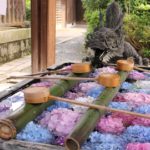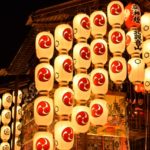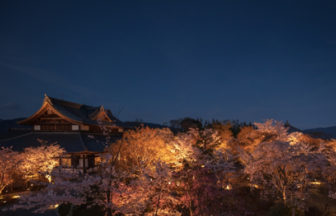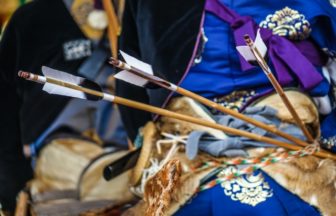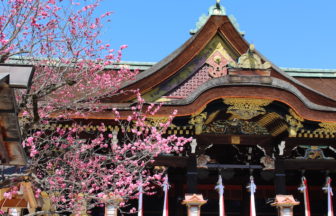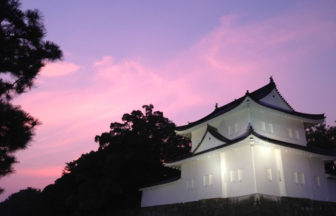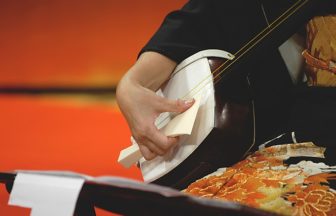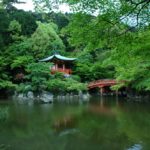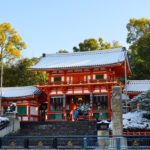If you have ever visited a shrine in June, you might have seen a large ring made of reeds placed on the grounds. These rings called chinowa, make their appearance for the summer ritual Nagoshi no Ōharae, (“Purification Ritual of Summer’s Passing”). It allows people to cleanse themselves of misdeeds committed in the first half of the year and to pray for the latter half yet to come.
Traditionally performed on the last day of June, the purification ritual permits those who pass through the ring.
The origin of Nagoshi no Ōharae and Passing through the chinowa wreath
Passing through the wreath is included to Nagoshi no Ōharae. This ritual has begun for expelling the evil spirits and praying for the health because a plague prevailed in the ancient time in Japan.
What is Passage through the “chinowa” wreath?
One explanation of the origin of this ritual comes from an ancient Japanese legend that tells story of the wandering god Susano’o no Mikoto.
One night, Susano’o no Mikoto looked for the house to stay when he traveled around Japan. First, he visited and asked Tan Shōrai to let him stay. Tan Shōrai is rich but he refused Susano’o’s suggestion. Next, Susano’o visited Somin Shōrai and asked to do the same thing. He, despite being poor, welcomed Susano’o and served as much as he could afford. In return, Susano’o gave Somin a ring woven from reeds and instructed him to wear it. It allowed Somin and his descendants to escape plague and illness.
Because of this, passing through the ring is believed to ward off disaster and misfortune.
The ring was originally worn around the west and the style has gradually changed after Edo-period ( 1603-1868).
How to through the chinowa wreath?
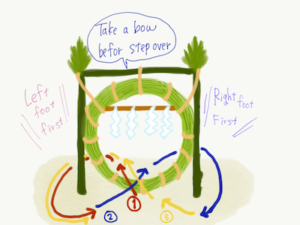
There is a rule of passing through the wreath.
A prayer passes through the wreath three times while chanting the spell.
There are several ways for this ritual, here is the basic rule.
1st: Bow once in front of the wreath and take a step forward with your left leg and turn anti-clockwise.
2nd: Bow once again and take a step forward with your right leg and turn clockwise.
3rd: Bow again in front of the wreath and take a step forward with your left leg and turn anti-clockwise.
Last, bow once again and get through the wreath.
Prayer should chant the spell in silence. This phrase is also various at each shrine.
The basic one is the following.
“Dispelling the evils, Purifying us, Protecting us, and Making us happy.”
Why People in Kyoto eat Japanese sweets Minazuki?

Eating Minazuki sweets on the last day of June is a custom for Kyoto people. This sweet is steamed cake made of sugar and rice flour called “uirō” topped with azuki beans and cut into a triangle.
People in old age eat ice to beat the summer heat at the ritual, but it was for only bourgeois.
Citizens made the similar thing to do the same thing and it lasts today.
The triangle shape and azuki are for dispelling the evil things so Minazuki sweets is special one for Nagodhi no Ōharae.
Three shrines where Nagoshi no Ōharae will be held
Actually, there are a lot of shrines where Nagoshi no Ōharae will be held in Kyoto.
We picked three of them and please check them as a reference.
1.Yasakajinja Shrine(八坂神社)
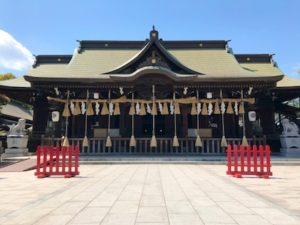
Yasakajinja Shrine is a head shrine worships Susano’o no Mikoto. Nagoshi no Ōharae is related to him so it is the best place to anticipate the ritual.
【Information】
Address:
625, Gion cho Kita gawa, Higashiyama-ku, Kyoto
Open:
9:00~17:00 (Anytime available for just visiting)
*The ritual will be held from 15:00.
Access:
5-minute walk from “Gion Shijo” St. on the JR line.
8-minute walk from “Kawaramachi” St. on the Hankyu line.
In front of “Gion” bus stop on the Kyoto Bus #206 at Kyoto St.
Admission Fee:
Free
2.Kamigamojinja Shrine(上賀茂神社)
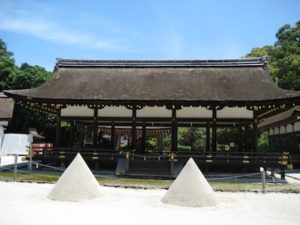
Kamigamojinja Shrine has already held the passing the ring ritual since June 10th. It will hold Nagoshi no Ōharae on June 30th. On the same day participants will place amulet dolls from across Japan on the stream in the site to let their misfortunes float away. The street vendors will sell local vegetables and special tofu to dispel the evils.
【Information】
Address:
339, Kamigamo Motoyama, Kita-ku, Kyoto
Open:
5:00~17:00
*The ritual will be held from 20:00.
Access:
20-minute walk from “Kitaōji” St. on the Karasuma Subway line.
In front of “Kamigamojinja-mae” bus stop on the Kyoto Bus #4 at Kyoto St.
Admission Fee:
Free
3.Jyonangu(城南宮)
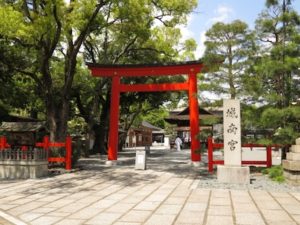
Jonangu annually hold passage the chinowa ritual from June 25th to 30th. This shrine will hold floating dolls ritual same as Kamigamojinja Shrine. Plus, people come pass thec hinowa to purify their cars from July 1st to 7th.
【Information】
Address:
7, Nakashima Tobanorikyu-cho, Fushimi-ku, Kyoto
Open:
9:00~16:30
*The ritual will be held from 15:00.
Access:
15-minute walk from “Takeda” St. on the Karasuma subway line or Kintetsu line.
Admission Fee:
Free
Do you need more information?
You should receive such local information of Kyoto by an application “KoI APP”.
With this application, even if you don’t have Wi-Fi, you can find nearby stores and so on.
You can install the application from the following URL.



